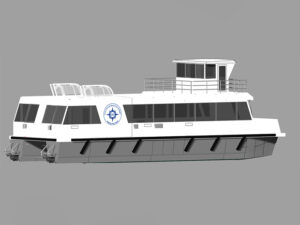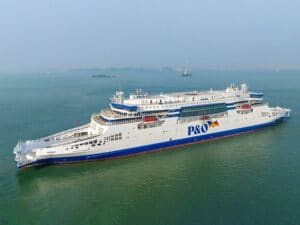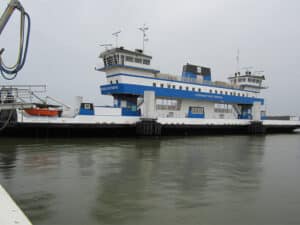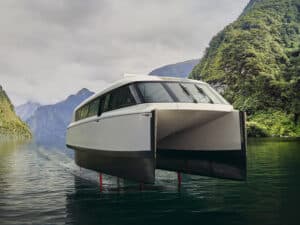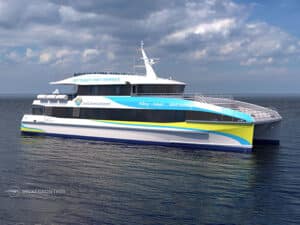
Wight Shipyard Co delivers four ferry build to Malta
Written by Nick Blenkey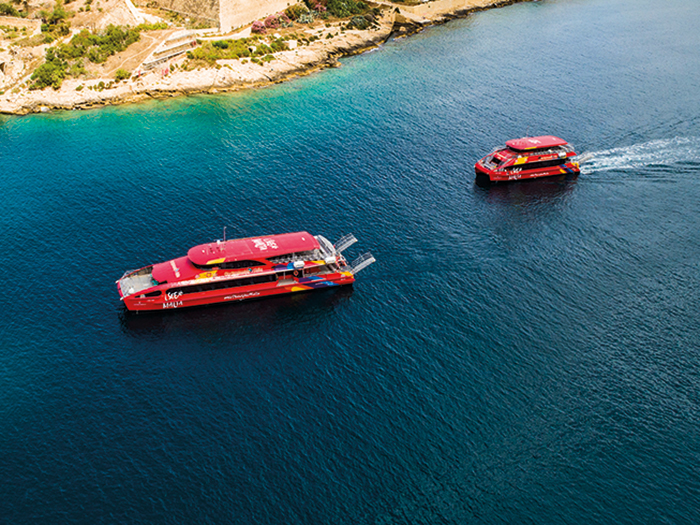
Order covered two 33 meter and two 20 meter catamarans
Britain’s Wight Shipyard Co. has notched up a U.K. first by building four ferries simultaneously for a leading Maltese tour operator.
The order, the Cowes, Isle of Wight, shipyard’s largest ferry export order to date, consists of two 20-meter and two 33-meter light weight ferries, designed by Australia’s One2Three Naval Architects.
“We are proud of being able to produce four large ferries within a year, despite the restrictions and changes to working brought about by the worldwide COVID-19 pandemic,” said Wight Shipyard COO Jo Daly. “This is testament to the outstanding team that made such a quick completion possible while still achieving the same high build standards and attention to detail that WSC has become synonymous with.”
Valletta’s Grand Harbor is both steeped in history and a geological site of significant interest dating back to prehistoric times where many of the ancient wharfs still exist. Creating a vessel that could operate within these parameters was led by One2Three Naval Architects, the clients, and the design team at Wight Shipyard.
Custom-designed for operator Captain Morgan Holdings Ltd., a subsidiary of Fortina Investments Ltd., the ferries have been created to be lighter and more fuel-efficient than anything that the yard has built before. Wight Shipyard specializes in the build of light weight ferries with the subsequent benefit of lower fuel burn. Meticulous attention is paid to the weight of every element of the materials and equipment used on the builds, which has led to outstanding weight reductions on all four of the ferries delivering substantial fuel savings. Every one percent of weight saving equates to one percent of fuel saving.
HARBOR CATAMARANS
The two newbuild 20-meter harbor catamarans will replace existing vessels which already service the historic harbor cruise around the two natural harbors surrounding the capital city of Valletta and the Three Cities, the three fortified cities of Birgu, Senglea, and Cospicua.
The 20-meter vessel can carry 197 passengers and three crew and is designed to be a slower harbor water bus for frequent stopping in ports surrounding the sheltered waters around the capital. It is designed for optimum efficiency achieving speeds of between 8-10 knots, with a top speed of 20 knots.
It is powered by two MAN D2676 LE434 engines, each rated at 270 kW at 1,800 rpm, coupled to ZF500 marine transmissions and twin CJR 5 bladed dynamically balanced fixed pitch propellers.
The vessel’s layout provides for seated passengers on both the main and upper decks while providing excellent comfort levels in an open-plan deck arrangement. The wheelhouse main steering station is located on the second deck level for excellent visibility.
HOP-ON, HOP-OFF SERVICE
Each carrying 298 passengers and four crew, the two 33-meter medium speed vessels will service a new commuter/tourist hop-on hop-off service along the east coast of Malta as far as the island of Gozo. These vessels are also replacing a number of old existing vessels which transport commuters between the islands of Malta, Gozo, and Comino.
The main aim for these vessels is to move commuters and tourists quickly in and out of different locations around the coast and to offer commuters flexibility and comfort.
While operating below 20 knots, under high speed code the design can achieve a top speed of 30 knots. This vessel requires more power than the 20-meter ferry and has two MAN D2862 LE466 marine diesel engines, each rated at 749 kW at 2,100 rpm, coupled with two ZF3050 marine transmissions and two CJR 5 fixed propellers.
The layout of the 33-meter design vessel is slightly different to that of the smaller vessels. The main deck features an enclosed air conditioned cabin with seating and a kiosk/bar located at the aft end of the cabin, while the open upper deck provides protection for the passengers from rain with a large overhanging roof.
Compared to the older boats they are replacing the vessels will achieve considerable fuel savings and reduced operating costs.
They will also help to achieve sustainability targets and obtain lower emissions across the fleet. It is anticipated that current traffic congestion around Malta will be eased by large volumes of people using water transport not cars or buses.
Going forward, thee vessels will form an integral part of Fortina Investments’ innovative iSeeMalta concept, which provides visitors with access through a single pass to the ferry service, city sightseeing buses and public transportation, as well as to Heritage Malta sites and other attractions.

